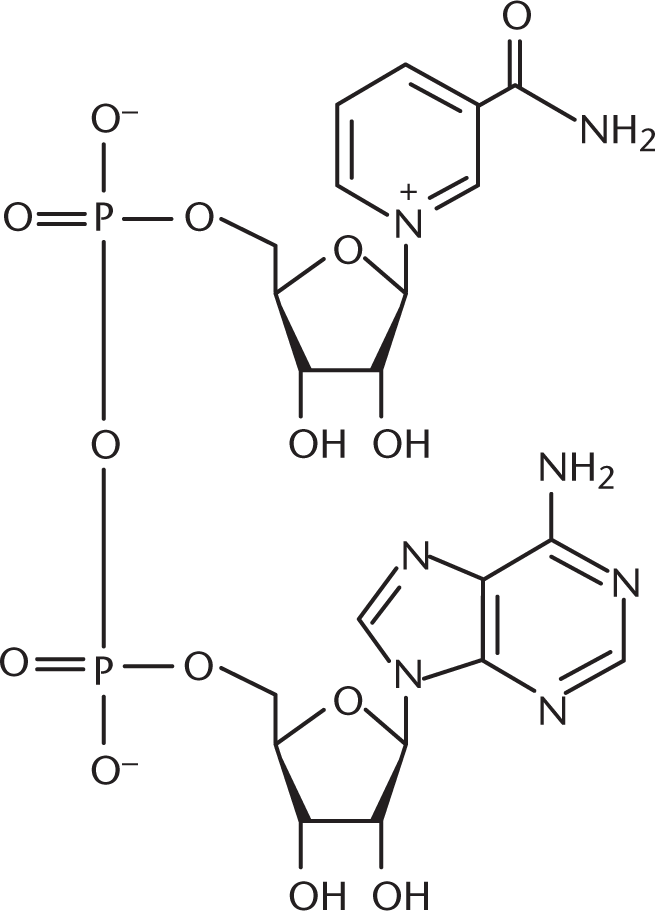Discrete Practice Answers
- A
The common name of ethanal is acetaldehyde, the common name of methanal is formaldehyde, and the common name of ethanol is ethyl alcohol. Isopropyl alcohol is the common name of 2-propanol. Propionaldehyde is the common name of propanal. - C
Aldehydes and carboxylic acids are characterized by their positions at the ends of carbon backbones and are thus considered terminal groups. As a result, the carbons to which they are attached are usually designated carbon 1. Ketones are internal by definition because there must be a carbon on either side of the carbonyl. - C
The highest-priority functional group in this molecule is the carboxyl group, so this will be a component of the backbone and provides the suffix of the molecule. This molecule is 2-methyl-3-oxopropanoic acid. - A
This molecule features an anhydride. The only other groups are hydrocarbon chains, which will provide part of the name of the parent root. Keep in mind that when a carbonyl group is present with a leaving group, the larger functional group (carboxylic acid, anhydride, ester, amide) takes priority over the carbonyl group alone. This molecule is propanoic anhydride. - C
Among the functional groups presented, carboxylic acids have the highest priority, and their compounds end with an –oic acid suffix. (A) denotes an alcohol, (B) a ketone, and (D) an alkyne, all of which have lower priorities than carboxylic acids. The MCAT does not test nomenclature of halides or ethers, but note that these must have lower priority than a carboxylic acid because they are less oxidized groups. - A
This molecule is 3-ethyl-4-methylhexane, not 2,3-diethylpentane. When naming alkanes, one must locate the longest carbon chain (6 carbons rather than 5 carbons), and the numbering system should give the alkyl groups the lowest possible numbers. - B
We know from the IUPAC name that we have a butanedioic acid backbone—in other words, a four-carbon backbone with carboxylic acids at either end. Adding the hydroxyl groups at carbons 2 and 3 then yields the correct structure. - B
Form– is a prefix shared by the common names of methanoic acid (formic acid) and methanal (formaldehyde). - A
The first task in naming a compound is identifying the longest carbon chain. In this case, the longest chain has seven carbons, so the parent alkane ends in –heptane. (B) and (D) can therefore be eliminated. Then, we must make sure that the carbons are numbered so that the substituents’ position numbers are as small as possible. This compound has two methyl groups; minimizing their position numbers requires us to number the chain from right to left. These methyl groups are attached to carbons 2 and 5, so the correct IUPAC name is 2,5-dimethylheptane. (C) is incorrect because the position numbers of the substituents are not minimized. - D
We begin by finding the longest carbon chain; because there are no non-alkyl groups, we don’t need to worry about any other groups’ priorities. We then number our carbons such that the lowest possible combination of numbers is given to the various substituents. Then substituents are organized alphabetically, not numerically—eliminating (C). - B
We know right away that (C) and (D) will be incorrect because a hydroxyl group is of higher priority than a methyl group. We also know that we will number the carbon chain so that the hydroxyl group receives the lowest possible position. Therefore, this molecule is 2-methyl-2-butanol, which starts with the prefix 2-methyl. - C
The suffix –amide in nicotinamide indicates that this compound contains an amide functional group. The prefix diphospho– indicates that there are two phosphate groups as well. Even if we did not know the prefix phospho– from this chapter, we should recognize that nucleotides, mentioned in the name of the compound, contain a sugar, a phosphate group, and a nitrogenous base. The structure of NAD+, the oxidized form of NADH, is shown below.

- A
We can use the name acetylformic acid to figure out what our functional groups are. The prefix acet– refers to a two-carbon unit with one carbon in a carbonyl group—think of acetic acid, acetic anhydride, or acetaldehyde. The carbonyl carbon is the point of attachment to another functional group. Formic acid is a single-carbon carboxylic acid. Therefore, acetylformic acid is an acetyl group directly attached to formic acid, as shown in (A). (B) shows acetic acid, or vinegar; (C) shows glucose; and (D) shows formic acid. - B
Acetic anhydride is the common name for ethanoic anhydride. Methyl formate is the common name for methyl methanoate; we can infer this from the common root form– and the ester suffix –oate (which is sometimes shortened to –ate for pronunciation purposes). Formic acid is the common name for methanoic acid, but this is a carboxylic acid—not a derivative. - C
Draw out the molecule, and you will see that the longest carbon chain with the substituents at the lowest possible carbon numbers is actually different from the one chosen in the original name. The correct IUPAC name for this molecule is 3-ethyl-4-methylhexane.